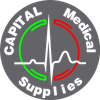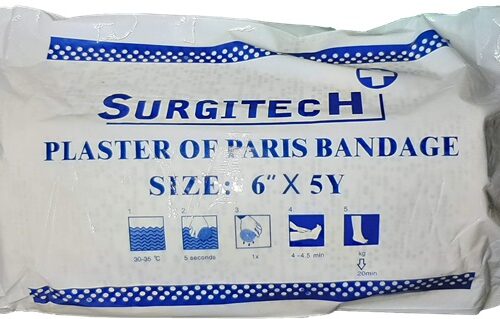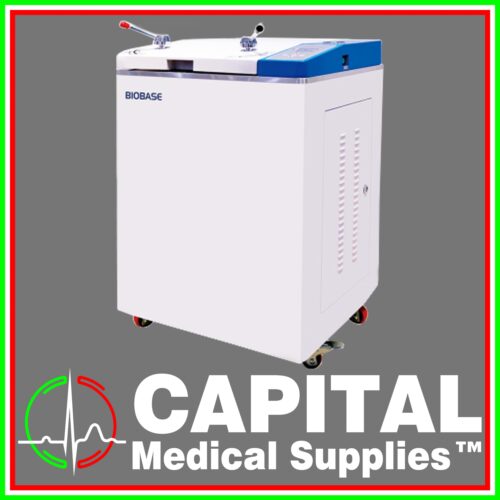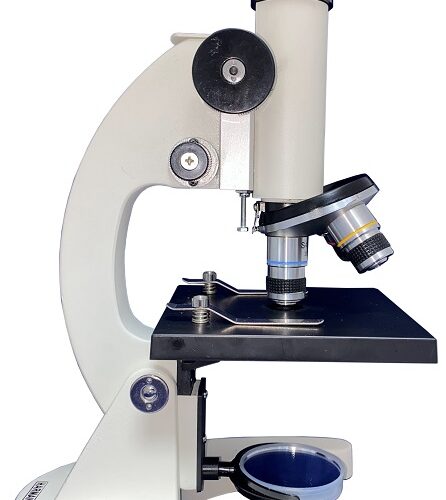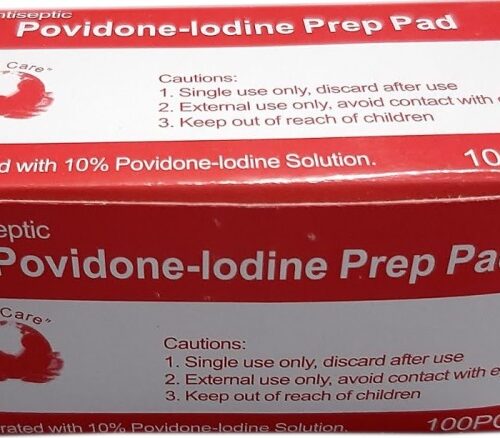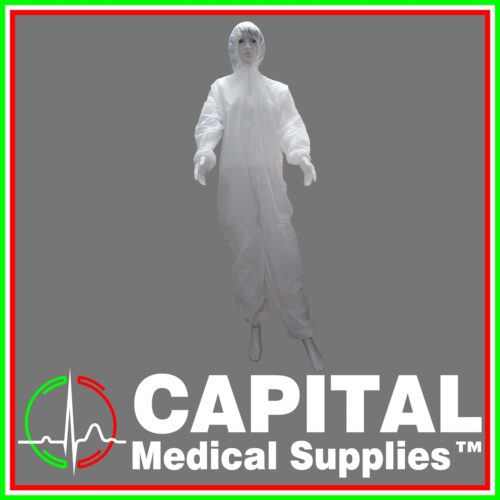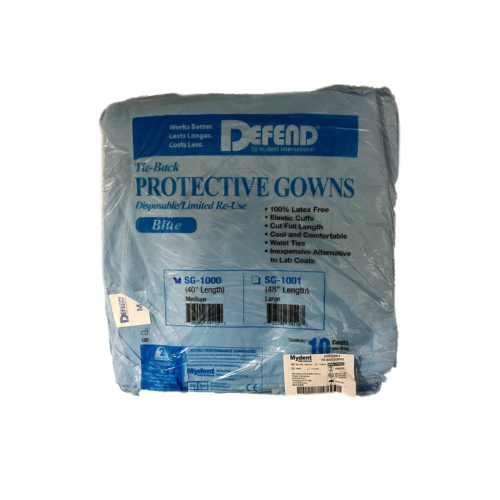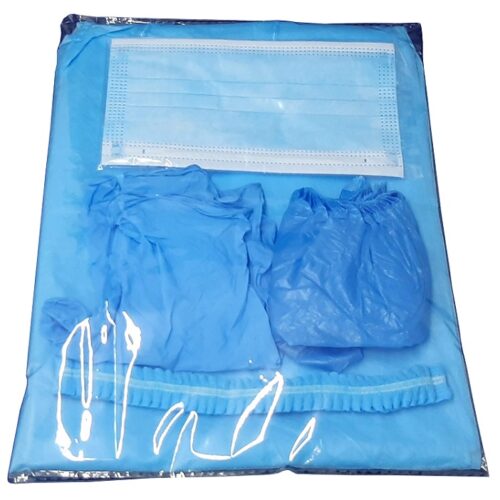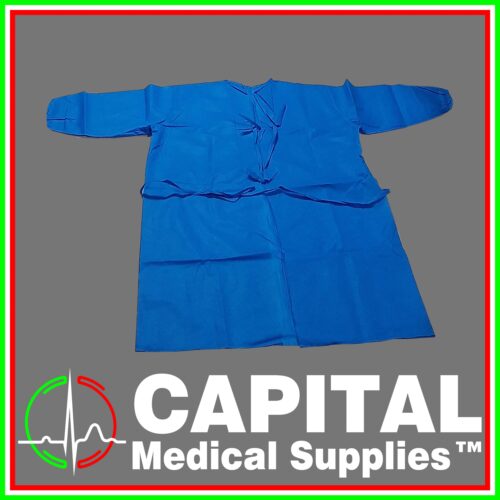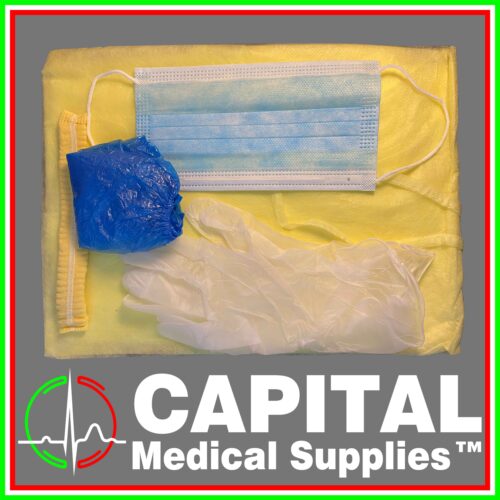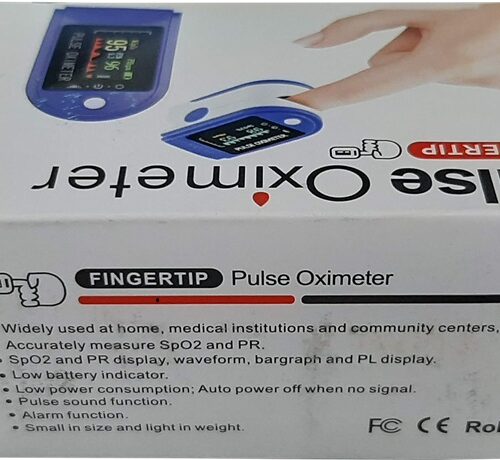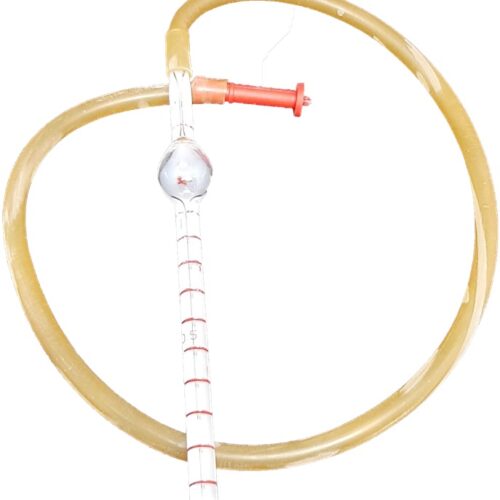Showing 561–576 of 912 results
-
Plaster of Paris Bandage 6″ x 5 yards
0₱147.00> Surgitech
> Plaster of Paris bandage
> 6×5 yards
> SterilePlaster of Paris is generally utilized as a plaster to join broken bones; a bandage soaked with plaster is added to water and afterwards folded over the broken part of the body, setting into a protective and supportive coating, known as an orthopaedic cast. Different kinds of moulds and prototypes are made with the help of plaster of Paris.
-
-
Portable Microscope BM-500E
0₱26,250.00Model BME-500D BME-500E BME-500SM BME-500V
Viewing head Monocular Head Inclined at 45?,360? rotatable Compensation Free Binocular Head Inclined at 30?,360? rotatable Compensation Free Trinocular Head,360? rotatable Dual viewing head, one tube 30?,inclined and another tube vertical, 360? rotatable
Achromatic Objectives 4X,10X,40X(S),100X(S,Oil)
Eyepiece Wide Field Eyepiece :WF10X,(WF16X optional)
Stage Double Layer Mechanical Stage Size 120*125mm
Focusing Coaxial Coarse and Fine Adjustment, Focusing Range 30mm, Focusing Interval 0.002mm
Condenser Abbe NA=1.25 with lris Diaphragm&Filter
IIIumination LED(1W) Lamp 220V or 110V ( LED 3W lamp optional)
Package Size 370*230*470mm
Gross Weight 5kg
Note: Trinocular microscope can be installed camera and screen.110V/220Vfor LED lamp -
Portable Microscope XSP12-A Harman Plastic
0₱4,199.00> Harman
> Microscope
> XSP 12-A
> With CaseA microscope is an instrument that is used to magnify small objects. It is through the microscope’s lenses that the image of an object can be magnified and observed in detail. A simple light microscope manipulates how light enters the eye using a convex lens, where both sides of the lens are curved outwards
-
Portable rechargable Mesh Nebulizer
0₱839.00> Winguard
> Mesh Nebulizer
> With Adult Mask
> Child Mask
> USB CablePower consumption: 2.0w
Input: 5v/1a
Oscillation frequency: 110kHz?10%
Condensation rate:??0.2ml/min
Atomized particles: ?5?m
Volume max: 8ml
Product weight: 115g??10%
Size (LxWxH): 45X45X100mm
Housing material: ABS
Operating conditions: Temperature: +5?c – +40?c
Relative humidity: < 93% RHnon-con-densing Operating conditions: -20?c - +50?c Relative humidity: <935 non-con-deensing Mesh nebulizers are the newest innovation of nebulizer products to the market. They use a mesh cap with tiny holes to help dispense medication into consistent particle sizes that can be easily and comfortably inhaled. -
Povidone Iodine Prep Pad, Antiseptic 10% Solution, 100Pcs
0₱189.00> Povidone Iodine
> Prep Pad
> Antiseptic
> 10%
> 100 pcs
> Single Use Only
> Discharge After Use
> External Use OnlyPovidone-iodine, also known as iodopovidone, is an antiseptic used for skin disinfection before and after surgery. It may be used both to disinfect the hands of healthcare providers and the skin of the person they are caring for. It may also be used for minor wounds. It may be applied to the skin as a liquid or a powder.
-
Povidone Iodine Prep Pad, Antiseptic 10% Solution, 100Pcs
0₱221.00> Povidone Iodine
> Prep Pad
> Antiseptic
> 10%
> 100 pcs
> Single Use Only
> Discharge After Use
> External Use OnlyPovidone-iodine, also known as iodopovidone, is an antiseptic used for skin disinfection before and after surgery. It may be used both to disinfect the hands of healthcare providers and the skin of the person they are caring for. It may also be used for minor wounds. It may be applied to the skin as a liquid or a powder.
-
PPE Cover All, Full Suit Set Non-Woven, Color White
0₱132.00> WINGUARD
> PPE
> Cover All
> Non-Woven
> Full Suit Set
> Color White
> 1 pcDisposable coveralls are an item of personal protective equipment (PPE) designed to cover the whole body and other clothing to protect against dirt or other outside contaminants. Coveralls are one piece and loose-fitting for ease of movement, with sleeves, full leggings, and often a hood to cover the head. These can also include overshoe pieces to cover footwear and protect against contamination.
Disposable Coveralls
The purpose of using disposable materials to make coveralls is to avoid cost issues when using non-disposable materials which are certain to sustain damage when used in situations that require coveralls very regularly, for harsh work conditions. Common materials used to make disposable gear are Tyvek, Polypropylene or Tychem. These materials have different safety ratings and properties which suit them to different environments. For example; some suits can be used in hazardous situations to protect from acid spills or hazardous chemicals while some more breathable varieties may not. The American National Standards Institute (ANSI) and The Occupational Safety and Health Administration (OSHA) have provided regulations and standards for the design, testing, and use of disposable coveralls which should be considered by employers while making a risk assessment, safety plan, and choosing PPE. -
PPE Protective Gown, Non-Woven 60 GSM, Tie-Back, Size Large
0₱205.00> WINGUARD
> PPE
> Isolation Gown
> Non-woven
> Color Blue
> 1 pcWhat is the purpose of medical isolation gowns:
? The purpose of a medical isolation gown is to protect the wearer from the splashing and soiling
of blood, body fluids, and other potentially infectious material. A medical isolation gown is worn
as part of personal protective equipment (PPE) for Droplet and Contact Precautions.
? Gowns should have long sleeves, cover the body front and back from the neck to the thighs,
overlap or meet in the back, fasten at the neck and waist and be easy to put on and take off.
? All health care workers require training on how to properly put on and take off isolation gowns.How to use medical isolation gowns:
? Gowns should only be worn when indicated for providing care to clients/patients/residents.
? When the use of a gown is indicated, it should be put on immediately before the task and must be
worn properly; tied at the neck and around the waist.
? Immediately after the task, the gown is to be carefully removed in a way that prevents
contamination of clothing or skin.
? Discard the used gown immediately after removal into the appropriate receptacle.
? Clean your hands. Do not hang gowns for later use. -
PPE Suit Set Blue PPE, Shoe Cover, Head Cap, Gloves, Facemask
0₱105.00> WINGUARD
> PPE
> Isolation Gown
> Non-woven
> Color Blue
> 1 pc medical gown
> 1 pc Facemask 3ply
> pair of shoe cover
> pair of glove
> 1 pc bouffant capWhat is the purpose of medical isolation gowns
? The purpose of a medical isolation gown is to protect the wearer from the splashing and soiling
of blood, body fluids, and other potentially infectious material. A medical isolation gown is worn
as part of personal protective equipment (PPE) for Droplet and Contact Precautions.? Gowns should have long sleeves, cover the body front and back from the neck to the thighs,
overlap or meet in the back, fasten at the neck and waist and be easy to put on and take off.? All health care workers require training on how to properly put on and take off isolation gowns.
How to use medical isolation gowns
? Gowns should only be worn when indicated for providing care to clients/patients/residents.
? When the use of a gown is indicated, it should be put on immediately before the task and must be
worn properly; tied at the neck and around the waist.? Immediately after the task, the gown is to be carefully removed in a way that prevents
contamination of clothing or skin.? Discard the used gown immediately after removal into the appropriate receptacle.
? Clean your hands. Do not hang gowns for later use. -
PPE, Medical Isolation Gown, Non-Woven Color Blue, 20 GSM, 1pc
0₱42.00> WINGUARD
> PPE
> Isolation Gown
> Non-woven
> Color Blue
> 1 pcWhat is the purpose of medical isolation gowns:
? The purpose of a medical isolation gown is to protect the wearer from the splashing and soiling
of blood, body fluids, and other potentially infectious material. A medical isolation gown is worn
as part of personal protective equipment (PPE) for Droplet and Contact Precautions.
? Gowns should have long sleeves, cover the body front and back from the neck to the thighs,
overlap or meet in the back, fasten at the neck and waist and be easy to put on and take off.
? All health care workers require training on how to properly put on and take off isolation gowns.How to use medical isolation gowns:
? Gowns should only be worn when indicated for providing care to clients/patients/residents.
? When the use of a gown is indicated, it should be put on immediately before the task and must be
worn properly; tied at the neck and around the waist.
? Immediately after the task, the gown is to be carefully removed in a way that prevents
contamination of clothing or skin.
? Discard the used gown immediately after removal into the appropriate receptacle.
? Clean your hands. Do not hang gowns for later use. -
PPE, Medical Isolation Gown, Non-Woven Color Yellow, 20 GSM
0₱42.00> WINGUARD
> PPE
> Isolation Gown
> Non-woven
> Color Yellow
> 1 pcWhat is the purpose of medical isolation gowns:
? The purpose of a medical isolation gown is to protect the wearer from the splashing and soiling
of blood, body fluids, and other potentially infectious material. A medical isolation gown is worn
as part of personal protective equipment (PPE) for Droplet and Contact Precautions.
? Gowns should have long sleeves, cover the body front and back from the neck to the thighs,
overlap or meet in the back, fasten at the neck and waist and be easy to put on and take off.
? All health care workers require training on how to properly put on and take off isolation gowns.How to use medical isolation gowns:
? Gowns should only be worn when indicated for providing care to clients/patients/residents.
? When the use of a gown is indicated, it should be put on immediately before the task and must be
worn properly; tied at the neck and around the waist.
? Immediately after the task, the gown is to be carefully removed in a way that prevents
contamination of clothing or skin.
? Discard the used gown immediately after removal into the appropriate receptacle.
? Clean your hands. Do not hang gowns for later use. -
Pulse Oximeter, Fingertip
0₱315.00> Pulse oximeter
> Brand Partners
> Color Blue
> Easy to use
> Good Quality
> Easy to carry
> Monitoring for SPO2
> for Health monitoringPulse oximetry is a noninvasive method for monitoring a person’s oxygen saturation. Peripheral oxygen saturation (SpO2) readings are typically within 2% accuracy (within 4% accuracy in the worst 5% of cases) of the more desirable (and invasive) reading of arterial oxygen saturation (SaO2) from arterial blood gas analysis.[1] But the two are correlated well enough that the safe, convenient, noninvasive, inexpensive pulse oximetry method is valuable for measuring oxygen saturation in clinical use.
The most common approach is transmissive pulse oximetry. In this approach, a sensor device is placed on a thin part of the patient’s body, usually a fingertip or earlobe, or an infant’s foot. Fingertips and earlobes have higher blood flow rates than other tissues, which facilitates heat transfer. The device passes two wavelengths of light through the body part to a photodetector. It measures the changing absorbance at each of the wavelengths, allowing it to determine the absorbances due to the pulsing arterial blood alone, excluding venous blood, skin, bone, muscle, fat, and (in most cases) nail polish.
Reflectance pulse oximetry is a less common alternative to transmissive pulse oximetry. This method does not require a thin section of the person’s body and is therefore well suited to a universal application such as the feet, forehead, and chest, but it also has some limitations. Vasodilation and pooling of venous blood in the head due to compromised venous return to the heart can cause a combination of arterial and venous pulsations in the forehead region and lead to spurious SpO2 results. Such conditions occur while undergoing anesthesia with endotracheal intubation and mechanical ventilation or in patients in the Trendelenburg position.
-
RBC Pipette Red, 10pcs
0₱2,127.00> Trulab
> Red Blood Cell
> Pipette
> 10 Pcs/BoxA type of blood cell that is made in the bone marrow and found in the blood and lymph tissue.
White blood cells are part of the body’s immune system.
They help the body fight infection and other diseases.Red blood cells carry oxygen from our lungs to the rest of our bodies.
Then they make the return trip
taking carbon dioxide back to our lungs to be exhaled. -
RBC Pipette Red, 1pc
0₱226.00> Trulab
> Red Blood Cell
> Pipette
> 1 pcA type of blood cell that is made in the bone marrow and found in the blood and lymph tissue.
White blood cells are part of the body’s immune system.
They help the body fight infection and other diseases.Red blood cells carry oxygen from our lungs to the rest of our bodies.
Then they make the return trip
taking carbon dioxide back to our lungs to be exhaled.
